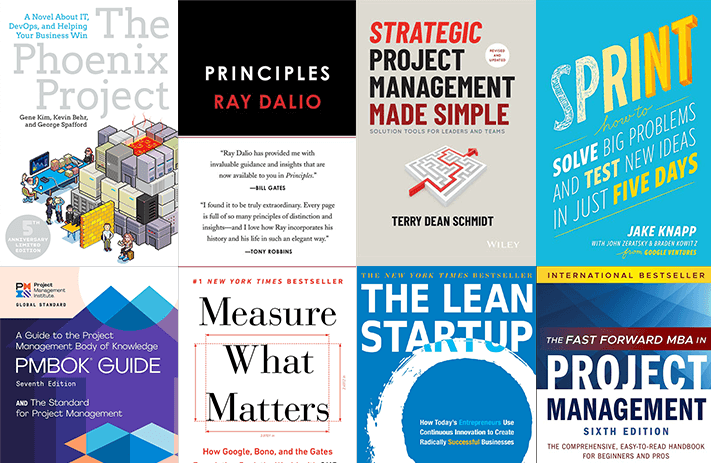
Click the button to start reading
Why Digital Dexterity is the Overlooked Skill Every Team Needs
There are many reasons a digital initiative doesn’t go as planned. Sometimes a project runs out of budget before it’s been fully implemented. There could be challenges integrating it within your organization’s existing systems. Perhaps there are technical issues you didn’t anticipate going into it. But the biggest reason that your digital initiative might fail? It’s human. And we’re not just talking about human error.
As most organizations have embraced some form of remote or hybrid work, teams rely more on tools and technology than ever. But the full potential of these tools – greater productivity, efficiency, accuracy, and growth – can only be realized when the people within your organization have both the ambition and ability to use them. This is a skill called digital dexterity. And it’s perhaps one of the most underrated skills an employee can have in today’s workforce.
Gartner established itself as an expert on the topic with their 2018 report, “Digital Dexterity at Work: How and why to prepare your workforce for the future of digital.” Their report surveyed 3,500 corporate employees to explore what digital dexterity is and how it can be cultivated within an organization.
So, whether you’re here trying to improve a digital initiative that didn’t go as planned or looking to cultivate digital dexterity proactively – you’re in the right place. Today, we’ll look deeper into the report’s highlights and explore the meaning of digital dexterity, why it matters, and how to promote it in your workplace.

What is digital dexterity?
Let’s start with a definition. Gartner’s report defines digital dexterity as “a set of beliefs, mindsets, and behaviors that help employees deliver faster and more valuable outcomes from digital initiatives.” When an employee is digitally dexterous, they’ll be “open to technology’s potential, willing to flex roles and take risks, adept at iterative and collaborative ways of working, and possess strong technology- and data-savviness.” According to the research, just 9% of employees and 16% of leaders meet the criteria, yet digitally dexterous employees are 3.3x more likely to launch and complete digital initiatives successfully. Perhaps you can see why this skill is so important!
So what are some digitally dexterous skills? The criteria is defined as an employee who is ambitious and able with digital initiatives. Some traits that work parallel with digital dexterity are ability to forward-think, flexibility, adaptability, a digital-first mindset, and data-drivenness.
Benefits of Digital Dexterity for your workplace
- Greater productivity and efficiency. The goal of most digital initiatives is to improve the productivity or efficiency of your team. With more digitally dexterous employees, you’ll be more able to maximize the impact of your technology to support business outcomes.
- More agility and digital adoption. Digital dexterity is linked with your team’s agility and, thus your organization. By prioritizing digital dexterity, your team will be more agile and quicker to respond to changes in the market. Additionally, when it comes time to introduce new tools, a digitally dexterous team will be better able to integrate them into existing workflows.
- Cultural changes. Digital dexterity is associated with risk tolerance, flexibility, and autonomy. By focusing on digital dexterity in your organization, you’ll notice changes to your organizational culture as a whole.

How to promote digital dexterity
By now, you might be recognizing the gap. If only 9% of employees are digitally dexterous, simply changing your screening and hiring process to account for this won’t be enough! Luckily, there are also steps you can take to build and promote digital dexterity within your organization. And they’re roughly based on three areas.
1. It starts with leadership
One of the most effective ways to cultivate organizational digital dexterity is to start with your leaders. When leaders are equipped with the tools they need to communicate, model, and align with digital priorities, it’s one of the highest-impact ways to make the changes widespread. Here are some ways leadership can be more effective in this capacity.
- Give leaders a narrative. Connect your digital initiative with a story. What’s the “why” behind what you’re doing? Any change – good or bad – can be exhausting or frustrating for employees. Rather than pushing a new tool or process on your team without an explanation, creating a story helps set the tone. It can help your team stay connected to the reason for the learning curve and inspire them to be part of a more significant transformation. Creating this narrative at the top ensures that your message stays consistent throughout the organization.
- Encourage them to model behavior. Effective leaders are usually influential because they take an active role in their team. There’s no sense that they’re above the rules or out of touch. So to help ease the transition to digital, get your leaders to demonstrate the digital dexterity you want from the team. This might mean normalizing failure, taking risks, or sharing when they’ve changed their mind or revised decisions.
- Align other aspects of the organization. If you’re hoping to change how your entire team operates, revisiting your operations is also helpful. Does your organization, as it operates now, prioritize digital dexterity? Create an environment where your digital initiatives are incentivized, rewarded, or put at the forefront. Some examples of how you might do this are by building digital dexterity metrics into performance reviews or making them KPIs for the year. Revisit any budgets, processes, or policies that might work against you and revise them.
3. Build an environment around digital dexterity
According to the definition, digital dexterity is connected with employees working iteratively and collaboratively. But how can you create an environment that fosters this? There are a few key ways.
- Promote the qualities you’re trying to foster. Qualities like iteration and collaboration are especially valuable for digitally dexterous teams. You might do this by creating diverse teams or removing whatever obstructs teams from operating most efficiently. When you empower teams to be more autonomous, they’ll naturally start cultivating digital dexterity.
- Clarify how employees can get IT support. The report shows that connecting employees without a technical background to IT support can make them more digitally dexterous. Create transparent processes so employees know how to use this resource when needed.
- Foster connections. There are likely already experts on your team for different tools and technologies. Identify them and activate them as consultants. This can either be in the way of formal training or by letting employees know they can go to designated experts with questions.
- Enable employee autonomy and self-service. Give employees more freedom to experiment with new technologies. You can start by training employees and integrating some lighter technical responsibilities into their current roles.
Want more ideas on how to impact cultural transformations? Check out this article on how to create a culture of innovation.
3. Develop your employees
While digital dexterity isn’t considered a competency on its own, several competencies work hand-in-hand. Below are a few of these competencies that you might consider in your hiring process.
- Business acumen
- Adaptability
- Political Savviness
- Fusion Collaboration
- Systems Thinking
The report suggests that most organizations overly rely on training and should instead focus on experience-based learning. One popular way to do this is through rotations that are closely connected with an employee’s desired career trajectory. Give your employees a reason to want to succeed and you’ll be both working towards the same goals.
Concluding Thoughts
Digital dexterous employees are quickly becoming one of an organization’s most valuable assets. With a digitally dexterous team, you’ll be better able to tap into the full powers of your technology and gain from all the productivity, efficiency, and cultural benefits.
Whether your team is ready for a digital transformation or sitting comfortably, why not try some of the abovementioned techniques and see what happens?
















